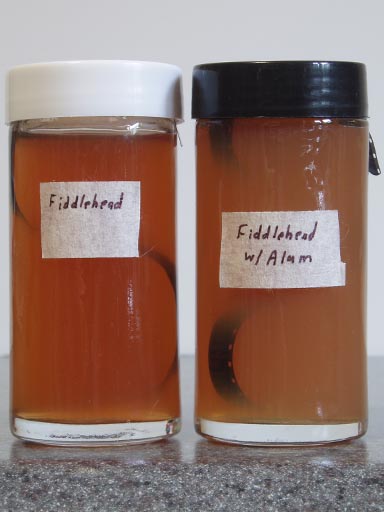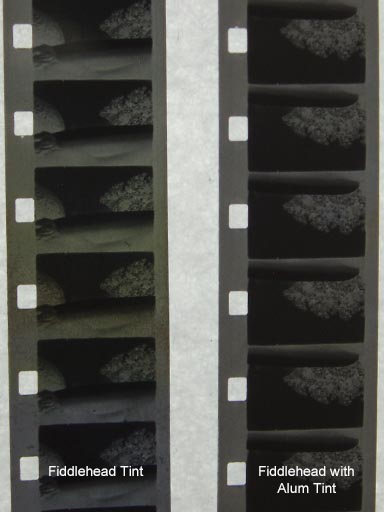Experiments in Eco-Processing
Blog 2018 May
May the 4th B with U
Mushrooms Cremini vs Portabella





The developer tests got progressively better in contrast as I increased the temperature and then increased the vitamin C.
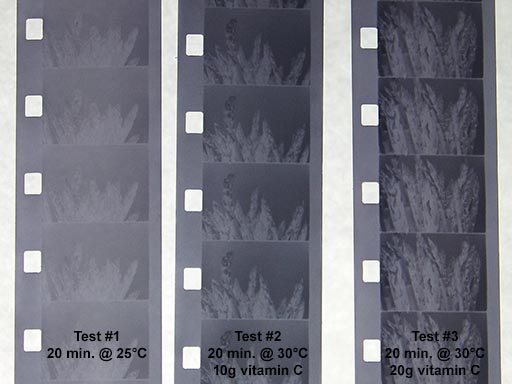
For the reversal tests, I wanted to see what increasing the vitamin C would do. The top test is a mushroom reversal with10g of vitamin C, the bottom is a mushroom reversal with 20g vitamin C.
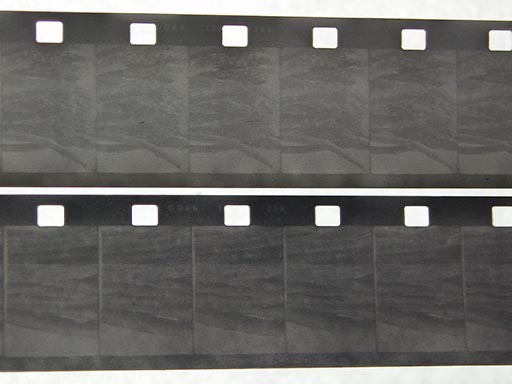
Mushrooms have been used to dye fabrics for hundreds of years. They produce a wide array of colour that come in creams, yellows, oranges, reds, purples, and browns. I was very excited to see how mushrooms would affect the film stock. I tried cremini mushrooms, which are also called baby bella, or mini portabella mushrooms. These mushrooms are botanically the same kind of mushroom as the larger and (older) portabella mushroom. If cremini mushrooms are allowed to grow into "adult hood" at some point in their size development they become full on portabella mushrooms.
Like many older living things, as a mushroom ages, it grows in size and also loses water content. I suspected that this might make a difference either in developer or tint.
During the making of See Weeds, there was a noticeable difference in the results with a dandelion developer made from spring dandelions to a developer made with autumn dandelions. It makes sense that the plant would lose some of its elasticity to water and aging, and the results seem to indicate that the plant's chemical composition has been altered but how does this really happen and what is happening exactly?
Below are some comparisons between the Cremini and Portabella tests.
I used 200 grams of mushrooms in 1.5 litres of water for both teas.
The portabella produced a darker tea.








For the portabella reversal was a resounding success!!!

Cremini Tints
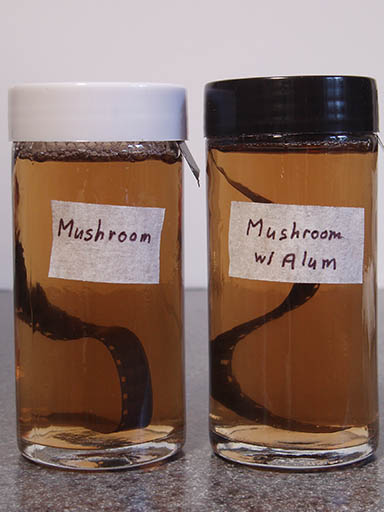
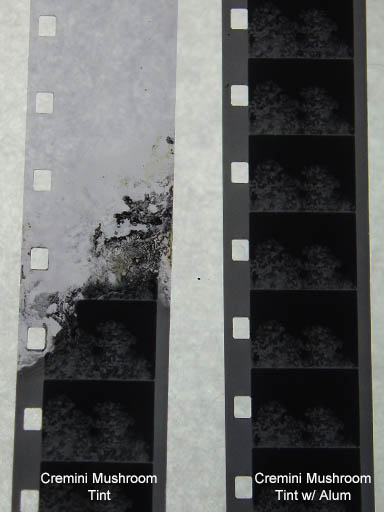
Portabella Tints
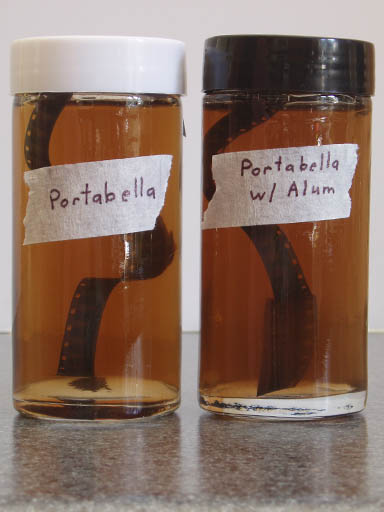
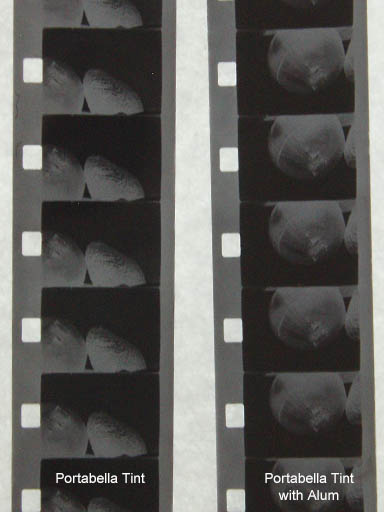
May 8, 2018
Lemons
When life gives you lemons you should try to make developer with it. I had such high hopes for this developer, but I believe it was too acidic. Most of the plants that have been successful developers run a pH of 4 or higher this lemon had a pH of 2. I decided to increase the washing soda to increase the alkalinity but to no avail. For the third tests, I decided to increase the temperature and agitate it constantly. Though there were differences, it was not as strong as a developer that I had hoped it would be. The tint also showed no results. This okay, there are other plants that produce great yellow like goldenrod and mint!





Lemon Tints
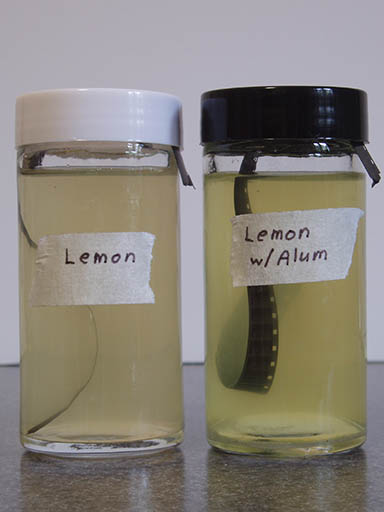
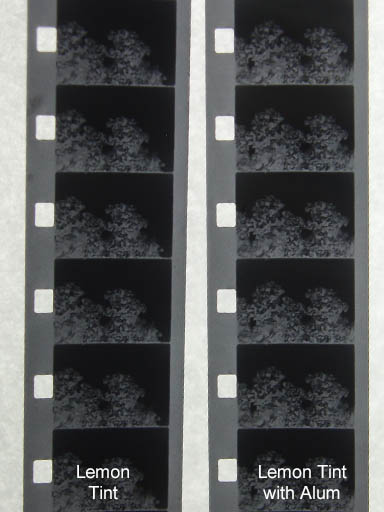
May 12, 2018
Figs
Found, fine, fresh, figs today at the grocery store. I tinted with them back in January but thought I would try them as a developer and retry the tint as I am now using alum as a standard part of the tinting process. Though the teas and tints are beautiful colours they do nothing for the film stock.





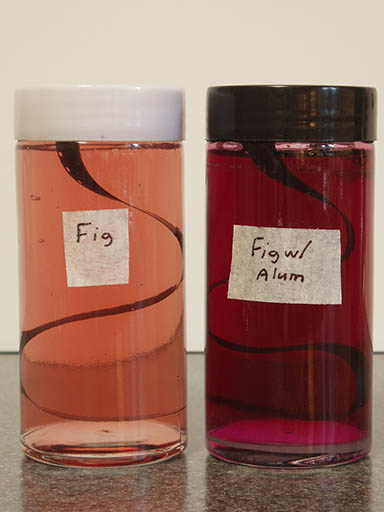
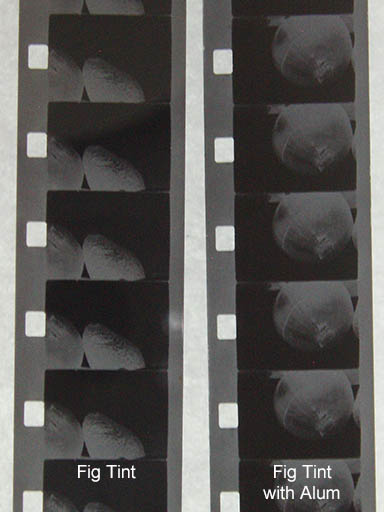
May 18, 2018
Iceberg Lettuce
I wanted to try iceberg lettuce because I didn’t think it was going to work – sort of like a base or neutral plant to start from (besides caffenol). Iceberg lettuce is mostly made up of water, is low in flavour, and low in nutrition but with a nice crisp texture. It worked very well, especially the reversal! I could not find the specific phenolic content of iceberg lettuce all of the material I read lumped all lettuces varieties together (which I didn’t think was right) so I started speculating about other factors that might be similar to the stronger developers that I recently discovered like kale, asparagus, eggplant, green bean. Some of these plants have a strong scent, but eggplant doesn’t really have a strong scent and iceberg lettuce certainly doesn’t. The other plants all have a darker colour to them but that doesn’t apply to the iceberg lettuce either. Then I started looking pH levels of the plants I have worked with so far:
| Plant | pH Level |
|---|---|
| Iceberg Lettuce | 5.80 - 6.15 |
| Asparagus | 6.00 - 6.70 |
| Avocados | 6.27 - 6.58 |
| Beans, string | 5.6 |
|
Blueberries |
3.12 - 3.33 |
|
Carrots |
5.88 - 6.40 |
|
Cranberry |
2.30 - 2.52 |
| Eggplant | 5.50 - 6.50 |
| Figs | 5.05 - 5.98 |
|
Grapes |
2.90 - 3.82 |
| Kale | 6.36 - 6.80 |
|
Lemons |
2.00 - 2.60 |
| Mushrooms | 6.00 - 6.70 |
| Onions, red | 5.30 - 5.80 |
|
Pomegranate |
2.93 - 3.20 |
|
Strawberries |
3.00 - 3.90 |
| Walnuts | 5.42 |
| Yams | 5.7 |
| Zucchini | 5.69 - 6.10 |
Most of the pH levels for plants I have been using have been between 5.5 and 6.7. The anomaly were carrots which have a pH of 5.88 – 6.40 but did not do so well in my tests. Carrots were also one of the first vegetables I worked with so perhaps it was user error or old carrots? A new test is in order for the carrots. I also noticed that plants with a pH between 5.0 and 5.5 did well but not as well as plants with a pH of 5.5 or higher.
What does pH have to do with this process? What is going on with the hydrogen ions? By adding washing soda I am raising the alkalinity of the developer so why should the original pH of the plant be relevant?






The only difference between lettuce reversal #1 and #2 is the length of time the second developer was allowed to work for. The second developer was left in longer for test #2 and the image has a much stronger contrast and wasn't so foggy. I also like the cool blotching in some of the frames in test #2, in particular, the "yellow' colouring in the third full frame from the top - though I have read this may be a fixer related issue.




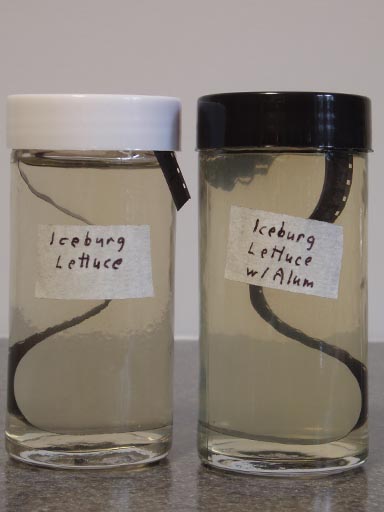
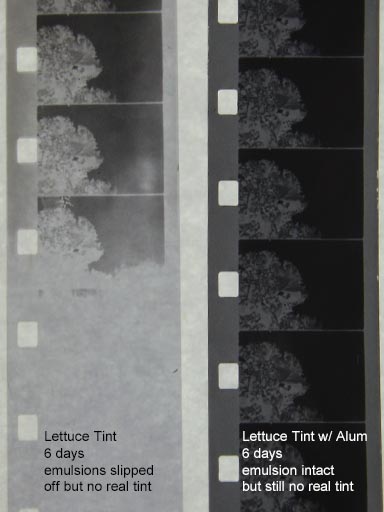
May 18, 2018
Pomegranate
The French word for pomegranate is "grenade" technically, the pronunciation for this word is not the same in English as it is in French but perhaps it will be a grenade of colour!!! I constructed two different teas. The first tea was made from frozen pomegranate seeds for no other reason than they were available (frozen pomegranates are certainly not cheaper than the cost of a regular pomegranate fruit). The second tea was with the actual fruit. I cut up the whole fruit, skin and all!






When mixed with washing soda and vitamin C that beautiful bubble-gum colour turned an orangey-brown. The first test did not fair well because of the temperature and the fact that the developer was not mixed correctly. Some of the washing soda did not fully dissolve in the mixture and there were some chunks left over in developer mixture. Every step even mixing is important.


The next tests got progressively better.

May 25, 2018
Pomegranate Eco-reversal
Today I focused on the pomegranate eco-reversal. I used the same bleach for all four tests. To compensate for the bleach getting exhausted each time, I increase the duration of the bleaching time by a minute for each test. The temperature for the bleach was 38°C for all four tests.
I then used a new developer for each test (Dev 1 and Dev 2 for test one was one developer, then Dev 1 and Dev 2 for test two were another developer and so on). The timing for Dev 1 was always 20 minutes at 30°C. The other variables that were changed were the exposure to light and how long Dev 2 was allowed to “work for.” The times for Dev 2 were based on how the film reacted to light. What I gained by doing the reversals consecutively like this was being able to watch the film change to “that milky texture” in the light and then use Dev 2 based on theses results.
These are the results from the test:

Pomegranate Tint Tests. Not the pink I had hoped for but decent yellow tones.
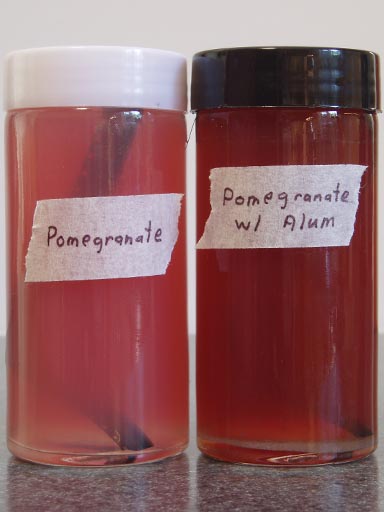
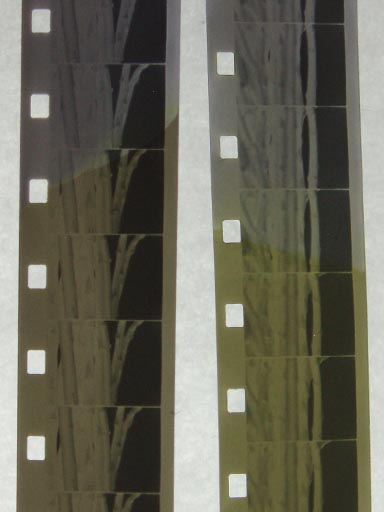
May 30, 2018
Fiddlehead Ferns
Fiddleheads are the curled shoots of the ostrich fern, kind of baby ferns. Fiddleheads are in abundance at the farmers market in the spring and can even be found in some mainstream grocery stores. A lot of care needs to be taken when storing, cleaning, and cooking them as they are prone to causing food poisoning, also some fiddleheads can be a tad on the carcinogenic side (mostly bracken ferns but some literature points to toxicities in this type of fern as well). All in moderation, I say. This is how it worked as a developer and the reversal:







The Tint:
